Nepean Pro Plant Care: Stop Summer Disease, Save Plants $$
Trouble brewing in your Nepean garden? Seeing spots or weird powdery coatings on your favourite plants? Don't let summer diseases ruin your hard work! Learn how to protect your plants and save money. Need expert help now? Request your free quote today!
Quick Guide to Healthy Summer Plants:
- Identify common Ottawa summer plant diseases like Powdery Mildew and Black Spot.
- Implement proactive strategies: proper watering, good air circulation, mulching, and garden hygiene.
- Choose disease-resistant plant varieties when possible.
- Act quickly at the first sign of trouble using eco-friendly methods first.
- Address other stressors like heat, drought, and pests which weaken plants.
Introduction: Keep Your Nepean Garden Gorgeous (and Your Wallet Happy!) This Summer
Ah, summer in Nepean! The perfect time for backyard BBQs and enjoying your beautiful garden... until things get a bit *funky*. Pesky Powdery Mildew making your patioside petunias look dusty? Black Spot turning your prize-winning roses into spotty messes? You're certainly not alone! These common summer plant diseases thrive in the heat and humidity across Ottawa, popping up in gardens from bustling Barrhaven to leafy Manotick. It’s incredibly frustrating to watch your careful gardening efforts wilt away, isn't it? And let's be honest, replacing diseased plants hits the wallet harder than a surprise hydro bill! Losing that gorgeous landscaping you worked for is a real bummer, affecting both your curb appeal and your mood. But don't despair or reach for the emergency trowel just yet. The secret to keeping your plants healthy and saving some cash isn't top-secret garden magic. It all comes down to *proactive* care. Let's explore how to spot trouble early and keep your green space gorgeous all season!
Decoding the Damage: Ottawa's Most Unwanted Summer Plant Guests
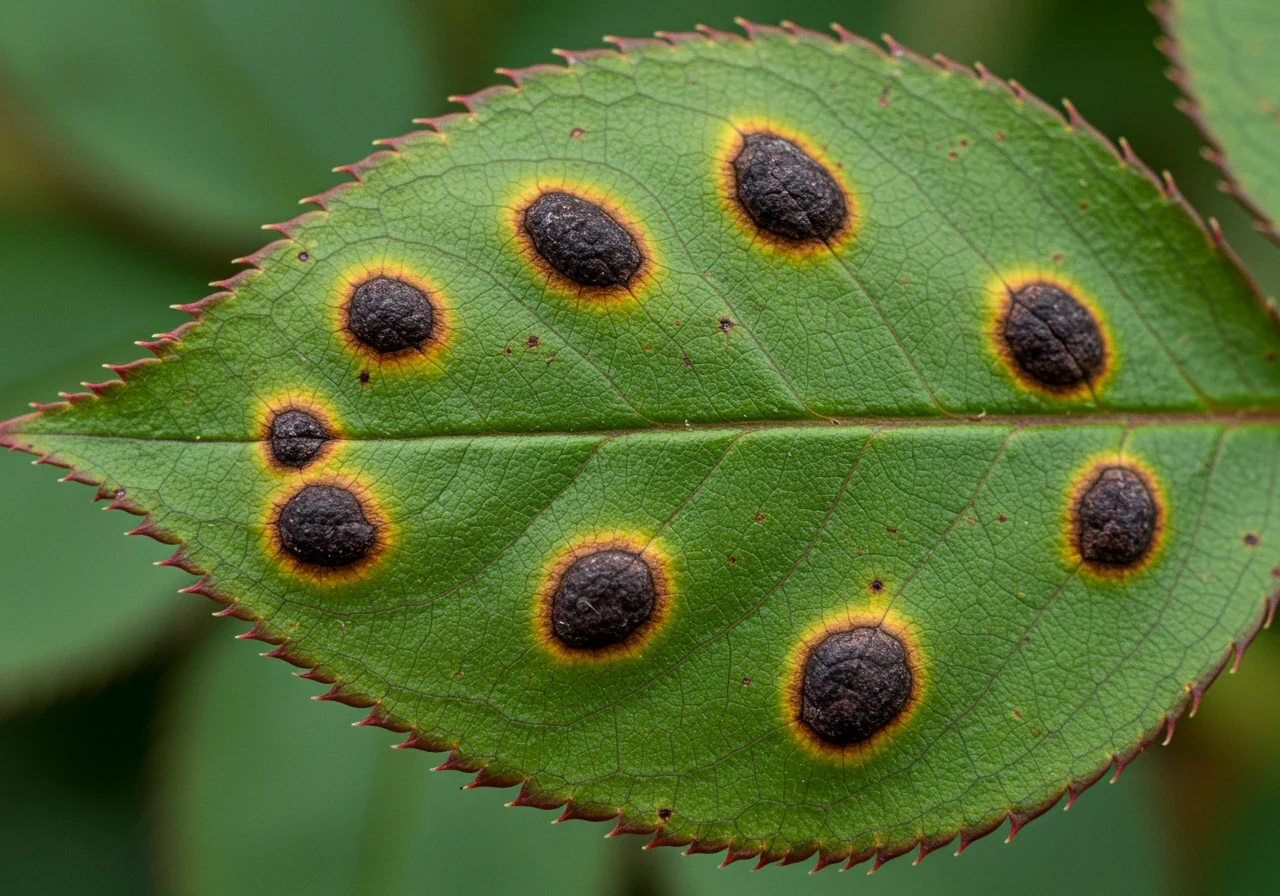
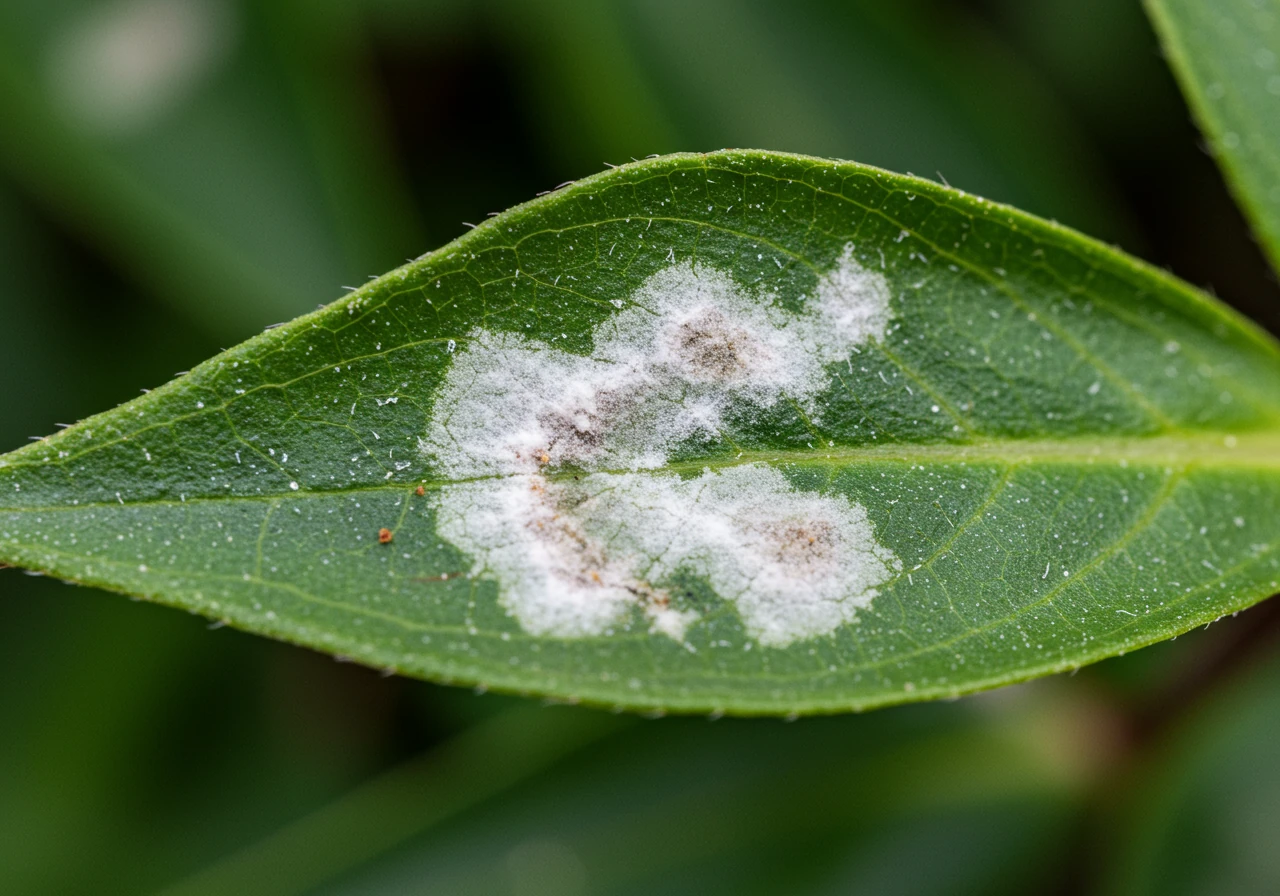
Alright, let's talk about those uninvited guests crashing your garden party this summer – no, not your cousin who always double-dips, we mean plant diseases! Ottawa's summers, with their lovely heat often paired with sticky humidity (especially after a good rain), unfortunately create the perfect conditions for some common fungal problems to thrive in gardens from Barrhaven to Kanata. It’s like throwing a pool party for fungi! Knowing what to look for can help you act fast and save your precious plants.
Here are a couple of the usual suspects you might spot:
- Powdery Mildew: This one looks exactly like its name suggests – patches of white or greyish powder, like someone dusted your plant leaves (especially phlox, bee balm, and squash) with flour. It loves humid conditions but doesn't need *standing* water on leaves to spread, just high air moisture.
- Tip: Improve air circulation around susceptible plants by giving them space when planting or doing some light pruning. Water the soil directly, not the leaves, especially early in the day so any splashes can dry. Good drainage, often helped by practices like spring lawn aeration for better drainage, can also reduce overall humidity around plant bases.
- Black Spot: Primarily a menace to roses, this fungus shows up as black spots on leaves, often fringed with yellow halos. Eventually, infected leaves yellow entirely and drop off, weakening the plant. Unlike powdery mildew, black spot *loves* wet leaves. Those warm, damp Nepean nights after a rainfall? Prime time for black spot.
- Tip: Again, water the soil, not the plant, and do it early so leaves dry before evening. Remove and dispose of (don't compost!) infected leaves immediately, both from the plant and the ground. This cleanup is a crucial part of proper fall garden prep too, as spores can overwinter on fallen debris.
- Leaf Spots & Anthracnose: You might also see various other spots – brown, tan, black – sometimes causing holes or tattered edges on leaves of trees, shrubs, and perennials. These are often grouped as leaf spot diseases or anthracnose, thriving in similar wet, warm conditions.
- Tip: Similar prevention applies: improve air flow, avoid overhead watering where possible, and clean up fallen leaves. Using smart irrigation practices that deliver water efficiently to the roots can make a big difference.
Keeping an eye out for these issues now makes your autumn tasks easier, informing those essential fall garden health checks. Catching things early is key! If disease problems feel overwhelming or keep returning despite your best efforts, remember that expert help is available through professional landscaping services to diagnose issues and recommend effective solutions for your specific garden needs.
Core Prevention Steps
Focus on these key areas to minimize summer disease risk:
- Water Smartly: Target the soil, water early in the day.
- Ensure Airflow: Space plants correctly, prune if needed.
- Mulch Well: Conserves moisture, prevents splash-up. Learn about proper mulching.
- Keep it Clean: Remove diseased leaves promptly, clean tools.
- Build Healthy Soil: Use compost for stronger plants. See our soil preparation services.
Who Gets Sick Often?
While many plants can be affected, keep an extra eye on these common Nepean garden residents:
- Roses (Black Spot)
- Phlox, Bee Balm, Lilacs (Powdery Mildew)
- Hostas (Leaf Spots, Slug Damage in damp conditions)
- Tomatoes, Cucumbers, Squash (Blights, Mildews)
- Crabapples (Apple Scab)
Choosing resistant varieties during material selection can help!
Dealing with Infections
If prevention wasn't enough, here's the general approach:
- Physical Removal: Snip off affected leaves/stems immediately (dispose in trash).
- Improve Conditions: Correct watering, ensure airflow.
- Organic Sprays: Consider horticultural oil, insecticidal soap, or neem oil if appropriate (read labels!).
- Conventional Fungicides: Use as a last resort for severe cases, ensuring correct diagnosis and application. Professional consultation is recommended.
Need help identifying or treating? Contact Clean Yards.
The Usual Suspects: Plants Prone to Summer Woes in Nepean & Beyond
Okay, let's get specific! While many plants can thrive in our lovely Ottawa summers, some seem determined to catch every sniffle that blows through Nepean, Greely, or Richmond. Think of them as the drama queens of the garden border. Knowing who the likely culprits are can help you keep a closer eye on them.
Here are some of the "usual suspects" often prone to summer woes:
- Roses: Oh, roses. Beautiful, yes, but often susceptible, especially to Black Spot. Many popular varieties have been bred more for stunning blooms than for iron-clad disease resistance. They need good air circulation, which can be tricky if they're planted too close together. Careful cleanup of fallen leaves is crucial, a task our Nepean Yard Cleanup Service team knows well!
- Phlox, Bee Balm (Monarda), and Lilacs: These beauties are practically magnets for Powdery Mildew. Their often dense foliage creates the perfect humid microclimate that this fungus loves. Giving them breathing room and thinning stems occasionally can really help improve air circulation.
- Hostas: While generally tough, hostas grown in consistently damp, shady spots can develop fungal leaf spots or anthracnose. More commonly, these damp conditions are a five-star resort for slugs and snails. While not a disease, their damage weakens the plant. Ensuring good drainage is key, especially in areas with heavier clay soil common around Ottawa. Proper application of mulch, avoiding piling it against stems, helps manage soil moisture without creating fungal havens – something covered in our approach to expert mulching and edging services.
- Vegetables (Tomatoes, Cucumbers, Squash): These garden favourites can suffer from various blights and mildews, often exacerbated by overhead watering or crowding, which keeps leaves wet for too long.
- Crabapples & Other Fruit Trees: Apple Scab and other fungal spots can plague ornamental and fruiting trees, especially after wet springs.
Why these plants? Sometimes it's genetics, sometimes it's their growth habit (like dense leaves), and sometimes it's just that the conditions they *like* (e.g., moisture for hostas) are *also* liked by diseases or pests. Persistent issues might even spread from nearby areas; if problems seem to originate from adjacent public land, solutions like our City Property Cleanup Service might indirectly benefit your yard by reducing disease reservoirs.
If you're constantly battling issues with specific plants despite your best efforts, it might be worth getting a professional opinion. You can explore a range of professional landscaping and garden care services or even request feedback on your specific garden situation to see if different strategies or even different plant choices might be better suited for your Nepean garden. Don't worry, even the most experienced gardeners deal with these summer challenges!
Your Plant Health Playbook: Proactive Strategies for a Disease-Free Summer
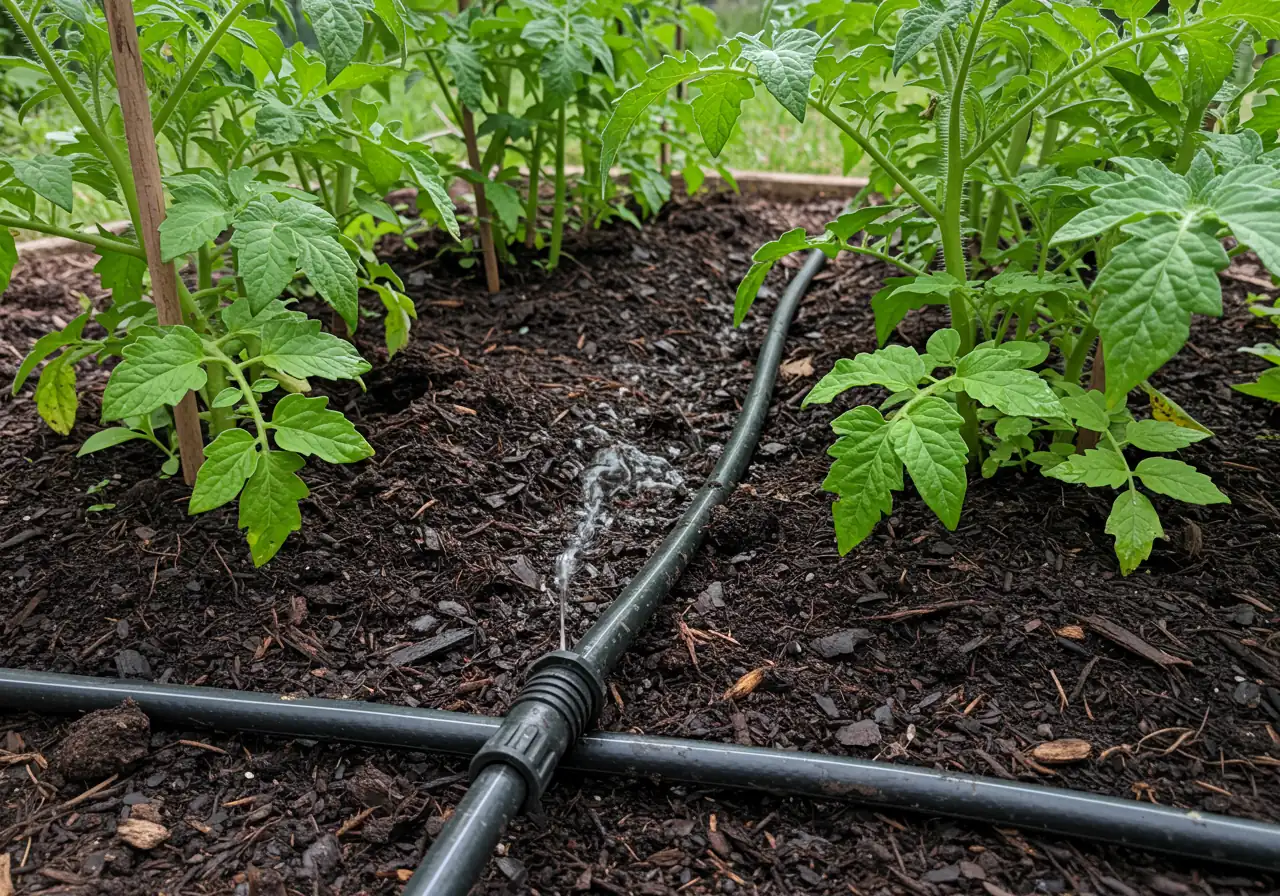
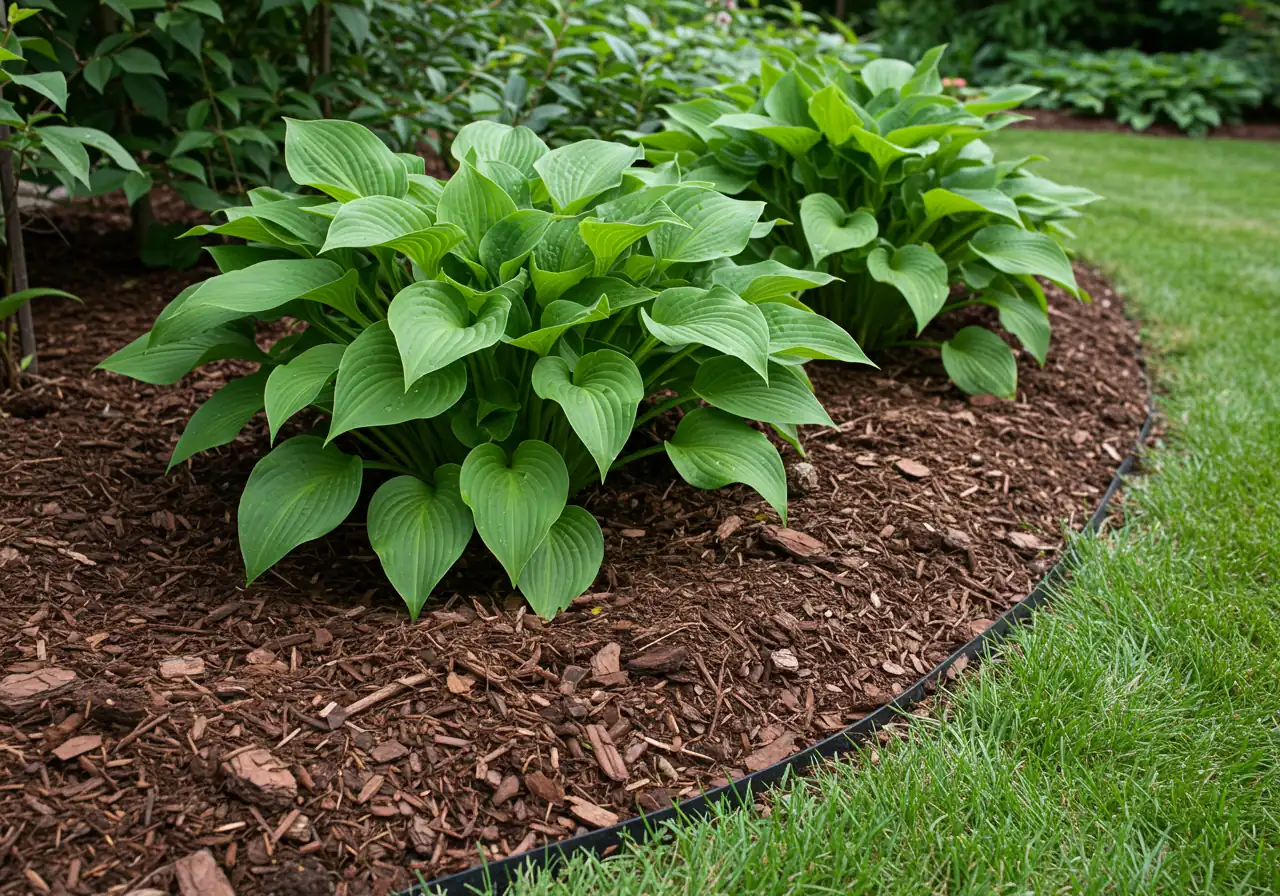
Alright team, let's talk strategy! Preventing plant diseases is way easier (and less heartbreaking) than trying to cure them once they've crashed the garden party. Think of this as your playbook for keeping those leafy greens happy and healthy all summer long in Ottawa. A little proactive TLC goes a long way towards a gorgeous garden and keeps your wallet happier too!
Here’s how to be the best plant parent on the block:
1. Choose Wisely, Grasshopper:
Start strong by picking plants suited for our Ottawa climate (Zone 5a) and, whenever possible, opt for disease-resistant varieties. Nurseries often label plants known to shrug off common issues like powdery mildew or black spot. It’s like picking the star athlete for your team – they’re less likely to sit on the bench with an injury! Our material selection guidance can help.
2. Water Like a Pro (Not a Sprinkler Gone Wild):
Fungi love wet leaves. Seriously, it’s their version of a spa day.
- Water the soil, not the foliage. Aim your hose or watering can at the base of the plants. Drip irrigation or soaker hoses are fantastic for this.
- Water in the morning. This gives the sun plenty of time to dry any splashes on the leaves before the cooler evening temperatures set in. Watering at night is like tucking fungi into a damp, cozy bed.
3. Feed the Soil, Feed the Plant:
Healthy soil grows healthy plants that are naturally more resistant to pests and diseases.
- Mulch Magic: Apply a layer (2-3 inches) of organic mulch (like shredded bark or wood chips) around your plants. This helps retain soil moisture (reducing water stress), keeps soil temperatures even, *and* prevents soil-borne diseases from splashing up onto leaves during rain or watering. Bonus: it suppresses weeds! Check out our mulching services.
- Compost Power: Mix compost into your soil when planting or top-dress existing beds annually. Compost is packed with beneficial microbes and nutrients that boost plant immunity. Folks with larger properties out in areas like Osgoode or Metcalfe often have ample space for home composting – a fantastic, eco-friendly way to create black gold for your garden! A robust root system supported by healthy soil is your plant's first line of defense. These practices contribute significantly to amazing garden transformations.
4. Give 'Em Some Breathing Room:
Good air circulation is key to keeping leaves dry and discouraging fungal growth.
- Space Accordingly: Don't crowd plants when installing new landscaping. Check the mature size on the plant tag and give them room to grow.
- Prune Power: Selectively prune dense shrubs or perennials to open them up and improve airflow through the canopy. Think of it as strategic ventilation.
5. Keep it Clean – Be the Bouncer:
Sanitation is surprisingly crucial in disease prevention.
- Remove the Riff-Raff: Promptly remove any leaves, stems, or entire plants showing signs of disease. Don't compost diseased material – bag it and put it in the trash.
- Tool Time: Clean your pruners and shovels regularly, especially after working with diseased plants. A quick wipe with rubbing alcohol or a disinfectant wipe can prevent spreading problems from one plant to another.
- Tidy Up: Rake up fallen leaves and debris, especially in the fall. Diseases can overwinter in garden litter. A thorough cleanup prevents spores from lurking. For larger tasks, engaging a professional garden clean-up service ensures nothing gets missed. Even keeping the edges neat, like where your yard meets the sidewalk, helps reduce hiding spots for disease – similar to how a City Property Cleanup Service tackles nearby public spaces. An overall tidy space, managed perhaps through a seasonal comprehensive yard cleanup service, contributes significantly to plant health.
Following this playbook doesn't guarantee zero problems (gardens love to keep us humble!), but it drastically stacks the odds in your favour for a vibrant, disease-free summer display. If you're feeling overwhelmed or facing persistent issues, don't hesitate to reach out. We're happy to help you implement these strategies – just contact us for tailored advice for your specific Ottawa garden needs.
Common Summer Disease Occurrence (Example Data)
*Illustrative percentages based on commonality in susceptible plants during typical Ottawa summers.
Uh Oh! Spotting Symptoms and Taking Swift (Eco-Friendly) Action
Okay, so you've set up your Ottawa garden beautifully, followed the playbook... but wait, what's that weird spot? Despite our best gardening efforts, sometimes problems pop up. Don't panic! Think of yourself as a garden ninja – spotting trouble early and acting fast is your superpower. Catching issues when they're small is *way* easier than battling a full-blown invasion later.
Keep an eye out for the first whispers of trouble:
- Subtle changes in leaf colour (yellowing where it shouldn't be).
- Tiny spots appearing on leaves or stems.
- A powdery or dusty coating that definitely isn't pollen.
- Wilting even when the soil feels moist (this can signal root or stem issues).
Found something suspicious? Time for swift, smart action, starting with the gentlest methods first – that's the heart of Integrated Pest Management (IPM):
- Snip Snip! See a few spotty or powdery leaves? Carefully snip them off immediately with clean pruners. This is often enough to stop minor problems in their tracks.
- Water Check: Did you accidentally water the leaves late in the day? Double-check your watering habits – ensuring dry leaves by evening is crucial.
- Go Organic (If Needed): If the problem seems a bit more widespread but still manageable, consider targeted organic sprays like horticultural oil or insecticidal soap (always read the label!). For fungal issues like powdery mildew, sometimes a simple spray of milk and water (about 1 part milk to 9 parts water) can help. Correctly identifying the *exact* problem is key before spraying anything, though – rushing can lead to the wrong treatment. You trust us for advice, and we take that seriously, just like we take protecting your information seriously as outlined in our Privacy Policy.
Disposing of the Evidence (Properly!):
This is SUPER important. Never compost diseased plant material. The spores can survive composting and just spread the problem next season.
- In areas like Barrhaven: Seal infected leaves and stems tightly in a garbage bag and put it out with your regular trash.
- In more rural spots like Metcalfe: Same advice applies – bag it securely for disposal. Avoid the temptation to burn it (spores can travel on smoke) or toss it in a back field or ditch. If you have a large amount of affected material from bigger shrubs or trees, dedicated removal might be necessary; services like the Metcalfe Property Cleanup Service can handle significant yard waste appropriately. Check out our Google My Business page for reviews!
When Eco-Friendly Isn't Cutting It:
Sometimes, despite best efforts, a disease takes hold aggressively. In these cases, conventional fungicides might be the only way to save a cherished plant. *However*, always identify the disease correctly first, choose the *right* product, and follow label instructions *exactly* for application rates and safety precautions. If you're unsure or uncomfortable, it's time to call in reinforcements. Getting professional help ensures the correct diagnosis and treatment, protecting your plants and the environment. Our team has experience dealing with stubborn landscaping issues – learn more about our approach on our About Us page. We can assist through tailored advice or direct help via our Ottawa Garden Clean Up Service, which includes managing diseased plant removal.
Spotting symptoms early and acting swiftly, starting with the simplest solutions, gives your plants the best chance. And remember, if you're dealing with a larger mess from storm damage or seasonal cleanup, a comprehensive City Yard Cleanup Service can get things back in order quickly.
Key Insight: Early detection and removal of diseased plant parts is often the most effective *and* eco-friendly way to stop summer diseases from spreading through your Nepean garden. Don't wait until it's widespread!
Beyond Disease: Tackling Other Summer Stresses That Weaken Your Plants
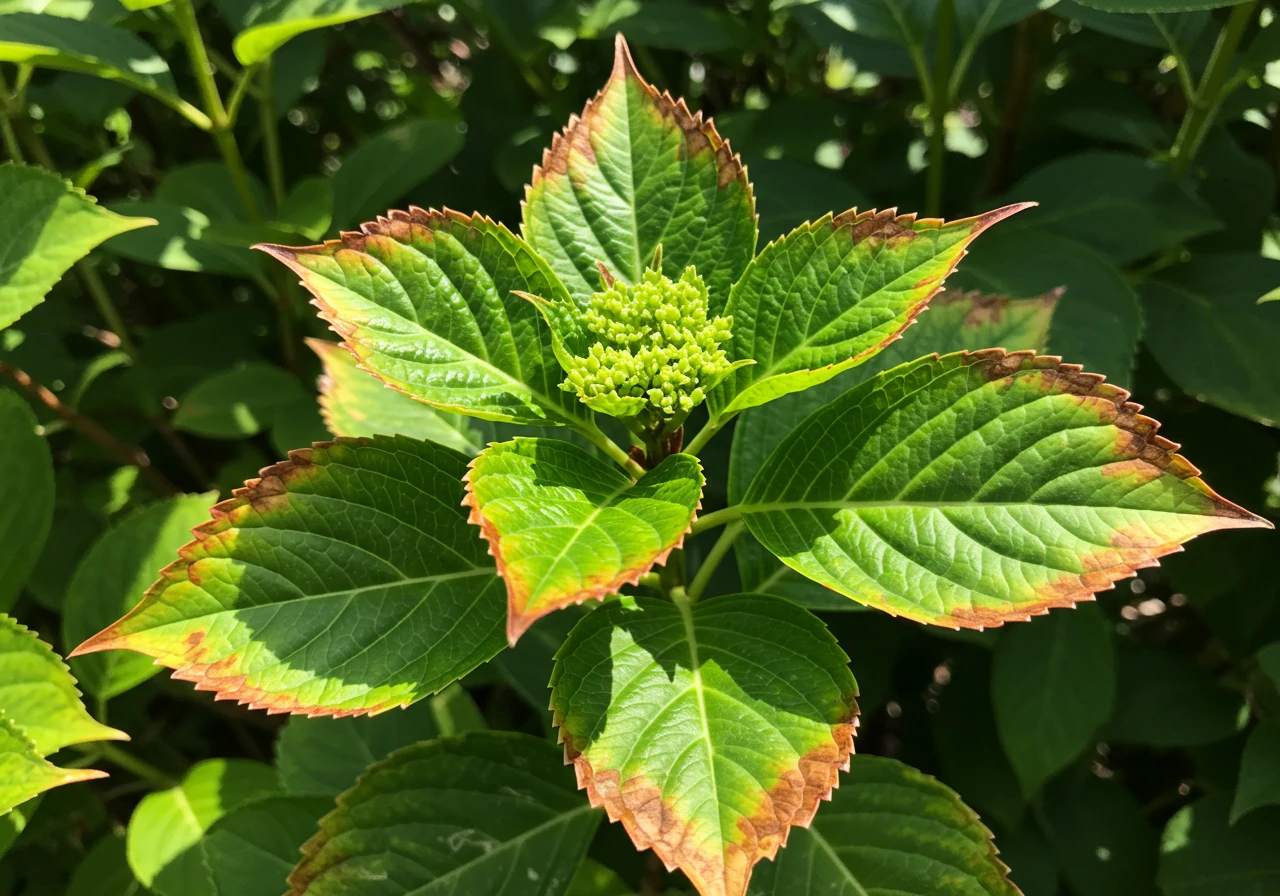
Okay, so we’ve talked about those sneaky diseases turning your beautiful gardening dreams into spotty nightmares. But hold on, diseases aren't the only party poopers crashing your summer landscaping scene! Other stresses can seriously weaken your plants, basically rolling out the welcome mat for those fungal foes. Think of it like being run-down yourself – that’s when you catch a cold, right? Same goes for plants!
Let's look at these other summer troublemakers common across Ottawa:
- Heat & Drought Stress: Remember those scorching July days, especially out in less shaded areas like Osgoode? Intense heat and lack of water stress plants out big time. They might wilt, drop leaves, or even stop growing altogether. A stressed plant is like an open invitation for diseases and pests.
- Tip: Water deeply and consistently during dry spells, preferably in the morning. A good layer of mulch acts like a cool blanket for the soil, conserving moisture and keeping roots happier. Ensuring proper soil preparation before planting helps roots access water more easily.
- Pesky Pests: Aphids, spider mites, Japanese beetles – oh my! These critters love munching on stressed plants. Not only do they cause direct damage by sucking sap or chewing leaves, but they also weaken the plant's defenses, making it easier for diseases to take hold. Plus, some pests are notorious disease carriers!
- Tip: Inspect plants regularly (check under leaves!). Sometimes a strong spray of water is enough to dislodge small pests. If things get out of hand and leave a mess, a thorough Ottawa property cleanup service can help remove heavily infested debris.
- Nutrient Niggles: Just like us, plants need a balanced diet to stay strong. Stressed plants often struggle to take up nutrients, especially if the soil is poor, compacted, or overly dry. This deficiency weakens them further.
- Tip: Healthy soil is key! Amend your soil with compost regularly. Consider a slow-release organic fertilizer if needed, but avoid over-fertilizing, which can cause other problems. Choosing plants suited to your soil type is also part of smart selecting the right materials for long-term success.
Managing these stressors is just as crucial as tackling diseases directly. A happy, well-watered, well-fed plant growing in good conditions is naturally more resilient. It’s all connected! We understand the unique challenges of Ottawa gardens, and our team is dedicated to helping your landscape thrive. Learn more about our team and our commitment to healthy, beautiful yards. Keeping your plants strong against *all* summer stresses is the best defense. Thanks for reading; we appreciate your trust in helping you care for your green space!
Seasonal Plant Health Timeline (Example)
Late Spring (May-June)
Focus on prevention: apply mulch, ensure proper spacing for airflow, choose resistant varieties if planting new.
Early Summer (June-July)
Monitor closely for first signs of disease (spots, powder). Implement smart watering. Address heat stress.
Mid-Summer (July-August)
Peak humidity - prime time for fungal issues. Be vigilant with monitoring and removal of affected parts. Check for pests.
Late Summer (August-Sept)
Continue monitoring. Begin thinking about fall cleanup to remove overwintering spores. See fall prep tips.
Key Takeaways: Your Cheat Sheet for Healthy Summer Plants
Okay, feeling a bit overwhelmed by all the potential garden drama? No worries! Here’s the quick and dirty cheat sheet to keep your Ottawa plants looking fab this summer, saving you heartache and cash. Think *proactive*, not reactive!
- Water Wisely: Remember, fungi love wet leaves overnight! Water the *soil* at the base of your plants, not the leaves themselves. Morning is best, giving everything time to dry before evening. This simple step is huge for preventing common landscaping headaches.
- Give 'Em Breathing Room: Don't plant your greenery cheek-to-leaf! Good air circulation helps keep leaves dry and discourages diseases like powdery mildew. Space plants out according to their mature size. A little elbow room goes a long way.
- Cleanliness is Key: Spot a diseased leaf? Snip it off immediately and put it in the trash (not the compost!). Regular tidying prevents spores from spreading. This includes keeping beds free of fallen debris – consistent care avoids bigger issues requiring extensive regular property clean-up. If you're facing a larger cleanup job from disease or storm damage, especially in areas outside the core, specialized help like the Metcalfe Garden Clean Up Service or the Marionville Property Cleanup Service can manage the removal safely and effectively.
- Prevention Pays: Healthy, well-watered plants in good soil are naturally more resilient. Mulching, proper feeding, and choosing resistant varieties set you up for success. A little effort now saves you from replacing stressed or diseased plants later! Consistent attention through services like ongoing garden maintenance can make prevention almost effortless.
- Act Fast: See something funky? Don't wait! Early intervention, even just snipping off a few bad leaves, can stop a small problem from becoming a big one.
Stick to these tips, and you'll be well on your way to a healthier, happier summer garden. Thanks for learning with us and putting these insights into practice!
Nepean Plant Care FAQs: Your Ottawa Summer Questions Answered
Ah, the dreaded summer brown patch! In Ottawa, this could be heat stress, chinch bugs (tiny pests!), or even a fungal issue thriving in humidity. Ensure you're watering deeply but infrequently to encourage strong roots. If it persists, proper diagnosis is key. Our expert Ottawa lawn care services can identify the culprit and recommend targeted treatments to get your turf looking green again.
That sounds like powdery mildew, a common summer visitor in Barrhaven and across Ottawa, especially when it gets humid! While it looks nasty and can weaken the plant over time, it's often manageable. Improve air circulation by thinning stems slightly, water the soil not the leaves, and snip off affected parts immediately. Good *gardening* hygiene helps prevent it from spreading.
Great question! During a hot, dry spell in Nepean, new shrubs need consistent moisture to establish roots. Forget light daily sprinkles. Instead, water deeply every 2-3 days. Check the soil first – stick your finger down a couple of inches. If it's dry, water thoroughly until the root zone is soaked. Proper watering reduces stress and helps your *landscaping* investment thrive.
Absolutely! Staying on top of weeds and removing spent flowers (*deadheading*) prevents them from setting seed, reducing future work. Also, promptly dealing with any diseased plant material stops problems from overwintering. Consistent effort makes fall less daunting. For significant debris removal later on, specialized help like our Marionville garden clean up service can efficiently handle larger properties, making seasonal transitions smoother.
Don't throw in the trowel just yet! Black spot *is* persistent on roses in humid Ottawa summers. Focus on prevention: plant in full sun with good air flow, water the soil early in the day, and remove infected leaves *immediately* (trash them!). Consistent care through dedicated garden maintenance programs can help manage it effectively, keeping those beautiful blooms coming.
It's always smart to be clear on the details! Reputable companies will have their service specifics clearly outlined. For instance, you can usually find information regarding payment schedules, cancellation policies, and service scope in their official documentation. You can review our policies anytime by checking the Clean Yards terms and conditions right here on our website for complete transparency.
Helpful Ottawa Gardening Resources:
- City of Ottawa Tree Planting Programs
- Master Gardeners of Ottawa-Carleton Resources
- Rideau Valley Conservation Authority (RVCA) Stewardship & Grants
- Agriculture and Agri-Food Canada AgriMaps (Soil Info)
Conclusion: Give Your Plants the Pro Advantage This Summer!
So, the secret's out! Keeping your Ottawa garden gorgeous and dodging those summer plant diseases isn't about complex magic spells – it's mostly about being one step ahead with smart, *proactive* care. Simple things like watering correctly (remember: soil, not leaves!), giving plants breathing room, and keeping your gardening space tidy make a huge difference.
But let's face it, sometimes those garden gremlins, like stubborn black spot or sneaky powdery mildew, just won't take the hint, especially with our humid summers. If you're finding yourself constantly battling the same issues, or if a problem seems complex, that's where the *pro advantage* truly shines. Whether you're in Nepean, Manotick, or anywhere across the region, professional help takes the guesswork out of tricky landscaping problems. We can accurately diagnose stubborn diseases and recommend targeted, effective solutions, saving you time, frustration, and money in the long run. See some of our work on the transformations page!
Ready to stop stressing and start enjoying your beautiful outdoor space?
Get Your Free Quote Today!Schedule a Garden Consultation
Here's to a summer enjoying your beautiful, thriving garden!

